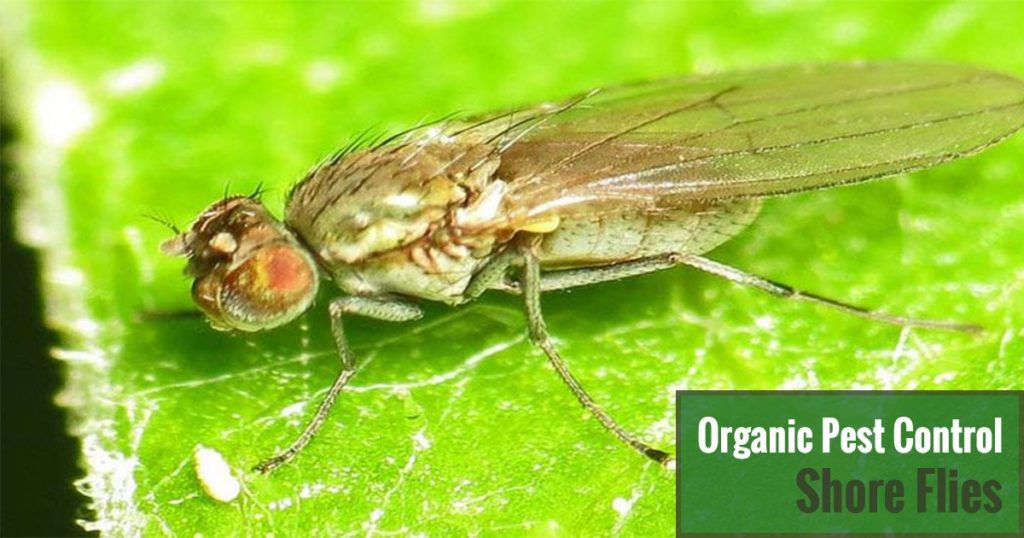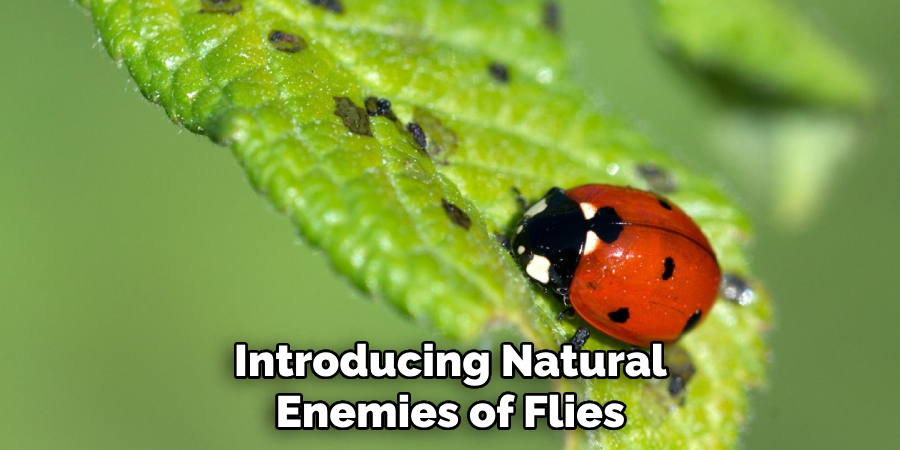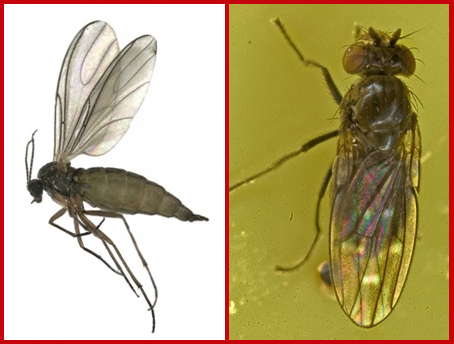To stop flies in a greenhouse, employ effective pest control methods such as installing sticky traps and using organic sprays. Greenhouses offer an ideal environment for flies to thrive due to the high humidity and abundance of organic matter.
However, these pests can damage plants and spread diseases. Preventing flies in a greenhouse is crucial for maintaining a healthy growing environment. Implementing proper sanitation practices, such as removing decaying organic matter, and regularly cleaning the greenhouse can help eliminate flies.
Another effective method is to install sticky traps, which attract and trap the flies. Additionally, using organic sprays made from natural ingredients like neem oil or insecticidal soap can deter and control unwanted fly populations. By employing these strategies, greenhouse owners can minimize the presence of flies and protect their plants.

Credit: greenhouseemporium.com
How to Stop Flies in Greenhouse: 6 Easy Methods
1. Understanding The Fly Problem In Greenhouses
Flies in greenhouses can be a major nuisance and cause potential damage to plants. There are several types of flies commonly found in greenhouse environments. These include house flies, fungus gnats, and leaf miners. House flies are attracted to decaying organic matter and can lay hundreds of eggs in a short period.
Fungus gnats feed on fungus in the soil and can damage the roots of plants. Leaf miners, on the other hand, lay eggs on the underside of leaves, which then hatch and burrow into the leaf tissue, causing damage to the plant.
To stop flies in the greenhouse, it is crucial to maintain cleanliness, regularly remove decaying organic matter, and use organic pest control methods such as sticky traps or beneficial insects. Taking these preventive measures will help ensure a healthy and pest-free greenhouse environment.
2. Prevention And Monitoring Techniques
Maintaining a clean and organized greenhouse is crucial in preventing and monitoring fly infestations. One effective technique is to screen and seal openings to block fly entry. This helps create a barrier and keeps the greenhouse protected. Another important step is implementing proper waste management practices.
Ensuring that organic matter and waste are properly disposed of reduces the chances of attracting flies. Additionally, installing sticky traps can aid in monitoring fly activity. These traps are designed to capture flies, allowing you to track their presence and take necessary actions to control them.
By following these prevention and monitoring techniques, you can effectively stop flies from infesting your greenhouse, creating a healthier and more productive environment for your plants.
3. Natural Fly Control Methods
Introducing beneficial insects is a natural and effective method to control flies in a greenhouse. These insects, such as ladybugs and lacewings, prey on flies and their larvae, reducing their population. Another option is to use biological control agents like nematodes and mites.
These organisms also target and eliminate flies. Additionally, botanical insecticides derived from plant extracts can be applied to deter flies. These insecticides are environmentally friendly and safe for the plants in the greenhouse. By employing these natural fly control methods, greenhouse owners can effectively manage and reduce the presence of flies without relying on harmful chemicals or pesticides.
4. Chemical Control Options
Chemical control options are essential in stopping flies in the greenhouse. It is crucial to select suitable insecticides for fly control in greenhouses. One must understand different application methods and timing to ensure effective control. Safety precautions should always be taken, and label instructions should be followed diligently.
By carefully choosing the right chemical control options, greenhouse owners can effectively manage and prevent fly infestations. Implementing these measures will help maintain a healthy and productive greenhouse environment. Always remember to consult professionals for expert advice on the most appropriate insecticides and control methods for your specific greenhouse needs.
With proper planning and implementation, flies can be effectively eliminated, ensuring a successful growing environment for plants.
5. Integrated Pest Management (Ipm) Approach
In order to effectively stop flies in a greenhouse, implementing an integrated pest management (ipm) approach is crucial. This holistic approach combines cultural, biological, and chemical control methods to tackle the fly problem. Regular monitoring and assessment of fly populations is a key aspect of ipm.
By staying vigilant and keeping a close eye on fly activity, greenhouse owners can identify potential infestations and take preventive measures. Cultural control methods, such as proper sanitation and removal of organic matter, can help reduce fly breeding sites. Biological control involves introducing natural enemies of flies, such as predatory insects, to keep their population in check.

Chemical control should be used as a last resort, with careful consideration of the impact on other greenhouse organisms. By implementing an ipm approach, greenhouse owners can effectively manage flies and create a healthier environment for their plants.
6. Additional Tips And Best Practices
Regularly cleaning and disinfecting tools and equipment helps prevent the spread of flies in the greenhouse. Dispose of infested plant debris properly to eliminate potential breeding grounds for flies. Maintaining proper ventilation and humidity levels in the greenhouse creates an inhospitable environment for flies to thrive.
By adhering to these best practices, you can effectively stop the infestation of flies in your greenhouse and ensure the health and productivity of your plants.
Frequently Asked Questions For How To Stop Flies In Greenhouse
How Can I Prevent Flies From Entering My Greenhouse?
To prevent flies from entering your greenhouse, make sure all openings are sealed, use fine mesh screens on doors and windows, and install fly traps or insect repellent devices. Keep the space clean and free from decaying organic matter, and use fly repellents or natural deterrents like citronella plants.
Regularly remove any standing water sources to eliminate breeding grounds for flies.
What Are The Most Effective Natural Remedies For Flies In A Greenhouse?
Several natural remedies can help control flies in a greenhouse. Some effective options include using sticky traps, apple cider vinegar traps, hanging bags filled with water or pennies, and planting insect-repellent herbs like basil, mint, and lavender. Additionally, deploying predatory insects, such as ladybugs or lacewings, can help reduce the fly population naturally.
Are There Any Organic Insecticides That Can Be Used To Eliminate Flies In A Greenhouse?
Yes, several organic insecticides can help eliminate flies in a greenhouse. Neem oil, insecticidal soap, and diatomaceous earth are commonly used organic options. These products are effective in repelling and killing flies while being safe for plants and the environment.
Ensure you follow the instructions and use the appropriate dosage when applying these insecticides.
Conclusion
Effectively controlling and preventing flies in a greenhouse is crucial for maintaining a healthy and productive environment for your plants. By implementing regular cleaning and maintenance practices, such as removing organic debris and practicing good sanitation, you can significantly minimize fly populations.
Additionally, employing natural predators like parasitic wasps or introducing fly traps can provide efficient and eco-friendly solutions for fly control. Remember to monitor your greenhouse regularly and take prompt action at the first signs of an infestation. A well-ventilated greenhouse and proper moisture management are also key factors in preventing fly breeding.
Taking a proactive approach to fly control will not only save your plants from damage but also ensure a clean and pleasant working space for yourself. So, follow these effective tips and bid farewell to those annoying flies once and for all!

